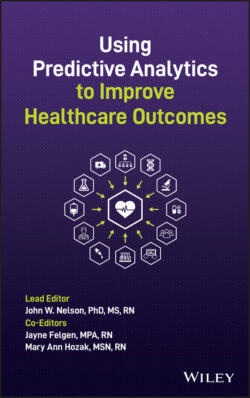Читать книгу Using Predictive Analytics to Improve Healthcare Outcomes - Группа авторов - Страница 75
Understanding an Organization's “Personality” Through Data Analysis
ОглавлениеSpending time with our data analyst helped us understand many new things. For example, we now realize that collecting data is like interviewing hundreds of people. The interviews are carefully examined in order to understand the significance of the varied responses from people in different areas of care, people from different disciplines, and people from specific demographic groups in the organization. We learned that analyzing data is like carefully listening to what each person is saying. You can hear what individuals and groups are saying, and you can learn something about who is thriving and who is struggling. This can be an enjoyable event, and it can also be stressful when you notice the sometimes vast differences in experience and outcomes, even within the same organization, sometimes even within the same unit. Each organization or unit has an overall culture, almost like a personality, where various behaviors are appreciated and others are tolerated, sometimes to the detriment of everyone involved. “Listening” to the data makes possible the retelling of what was learned about the culture and experience of the people. In the hands of a skilled analyst, data can tell a heart‐felt, and sometimes a heart‐breaking, story.
Data can tell a heart‐felt, and sometimes a heart‐breaking, story.
Having valid data about the effectiveness of any dimensions of a framework of care delivery enables the people closest to the work to engage in action planning, and it also makes it possible to propose predictive analytics studies which would allow people to move beyond real‐time use of the data into forecasting the likely outcomes of proposed changes. Organizational leaders and data managers can work together to tell the story of cultural change, prompted by the implementation of a framework of care, and use data to guide the change in the desired direction.
As you read each chapter in this book, we invite you to imagine that all or part of the story being told is happening in your organization, and how you and your colleagues might use this sort of information as you engage in the hard but joyful work of making your organization the best it can be.
